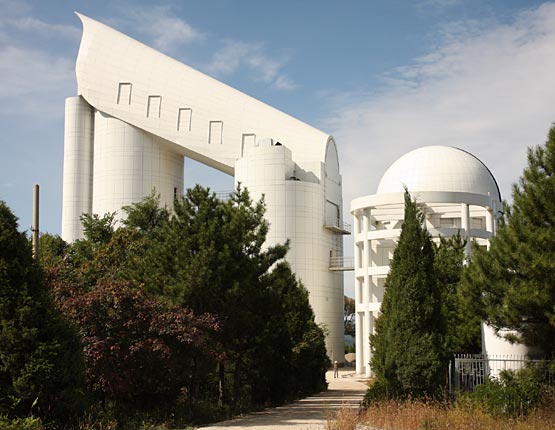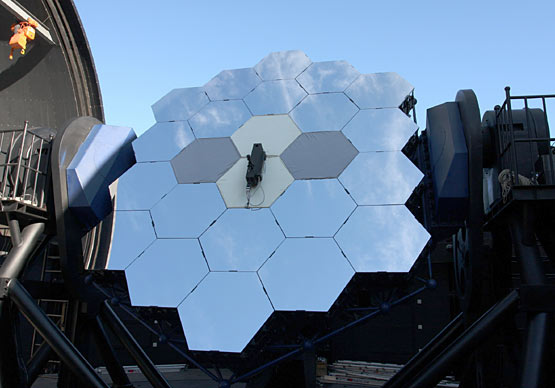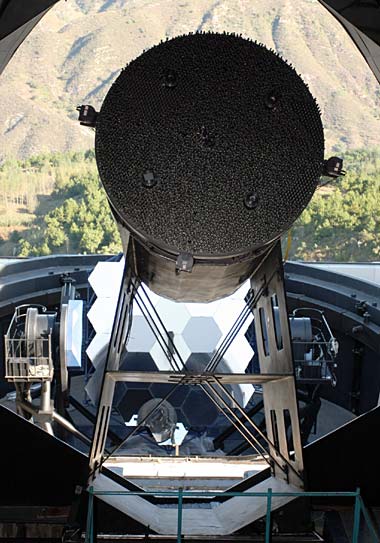October 16, 2008, was a big day for the Chinese astronomical community. Nearly 200 kilometers northeast of Beijing, at the Xinglong Observing Station of the National Astronomical Observatories of China (NAOC), leaders of the Chinese Academy of Sciences held a ceremony to celebrate the founding of something new and unique: LAMOST, the Large Sky Area Multi-Object Fiber Spectroscopic Telescope.

The LAMOST observatory buildings, aligned on the meridian.
Renjiang Xie
LAMOST is a survey instrument like no other. It was designed for maximum efficiency for one vital purpose: taking spectra of many millions of individually selected, very faint objects. Its designers had to find the best balance for this purpose between aperture, field of view, and many other factors.

The surface shape of LAMOST's 4-meter segmented primary mirror will be actively controlled, allowing the segments to be thin and light.
Renjiang Xie
The instrument's segmented thin mirror, seen above, has an aperture of 4 meters (160 inches), with the segments controlled by active-optics techniques. This aperture will enable LAMOST to obtain spectra of objects as faint as magnitude 20.5 magnitude in a 1.5-hour exposure.

LAMOST's fiber-optic image detector, seen from behind.
Renjiang Xie
That's not remarkable by today's standards — LAMOST's real power comes from its extraordinary field of view. The working focal plane is an immense 1.75 meters in diameter, corresponding to a 5° field on the sky.
As many as 4,000 optical fibers can be automatically positioned onto selected objects in the field, with each fiber feeding light to a spectral analyzer. As a result, the telescope has the highest spectrum-acquiring rate of any in the world.
Being a survey telescope, LAMOST needs to look only near the sky's north-south meridian to catch, in time, a large fraction of the celestial sphere passing across. As a result the telescope occupies special domes that look less like a traditional observatory than like some spaceport from a sci-fi movie.
“LAMOST’s equipment was completely installed by the end of August after four years’ of building," says Yongheng Zhao, the general manager of the project. "We are now in the stage of doing test observations and refining performance, which may take two years.”

With a diameter of some 500 meters (1,600 feet), FAST will be the world's largest radio dish. Click image for cross-section diagram.
NAOC / Chinese Academy of Sciences
FAST Radio Dish
Meanwhile, the ambitious Five hundred-meter Aperture Spherical radio Telescope (FAST) has been allocated government funds of nearly 700 million RMB yuan (nearly US$100 million). FAST will be built in a limestone karst valley in a sparsely populated mountanous area of Guizhou province about 1,800 kilometers southwest of Beijing.
FAST's dish will be composed of about 2,000 active panels, each 15 meters square, that can reshape into a paraboloidal surface for pointing in any direction as much as 40° from the zenith. Construction has begun and should be finished in 2014. FAST is expected to be 10 times as sensitive as the 300-meter dish radio telescope near Arecibo, Puerto Rico, currently the world's largest.
 0
0
Comments
You must be logged in to post a comment.